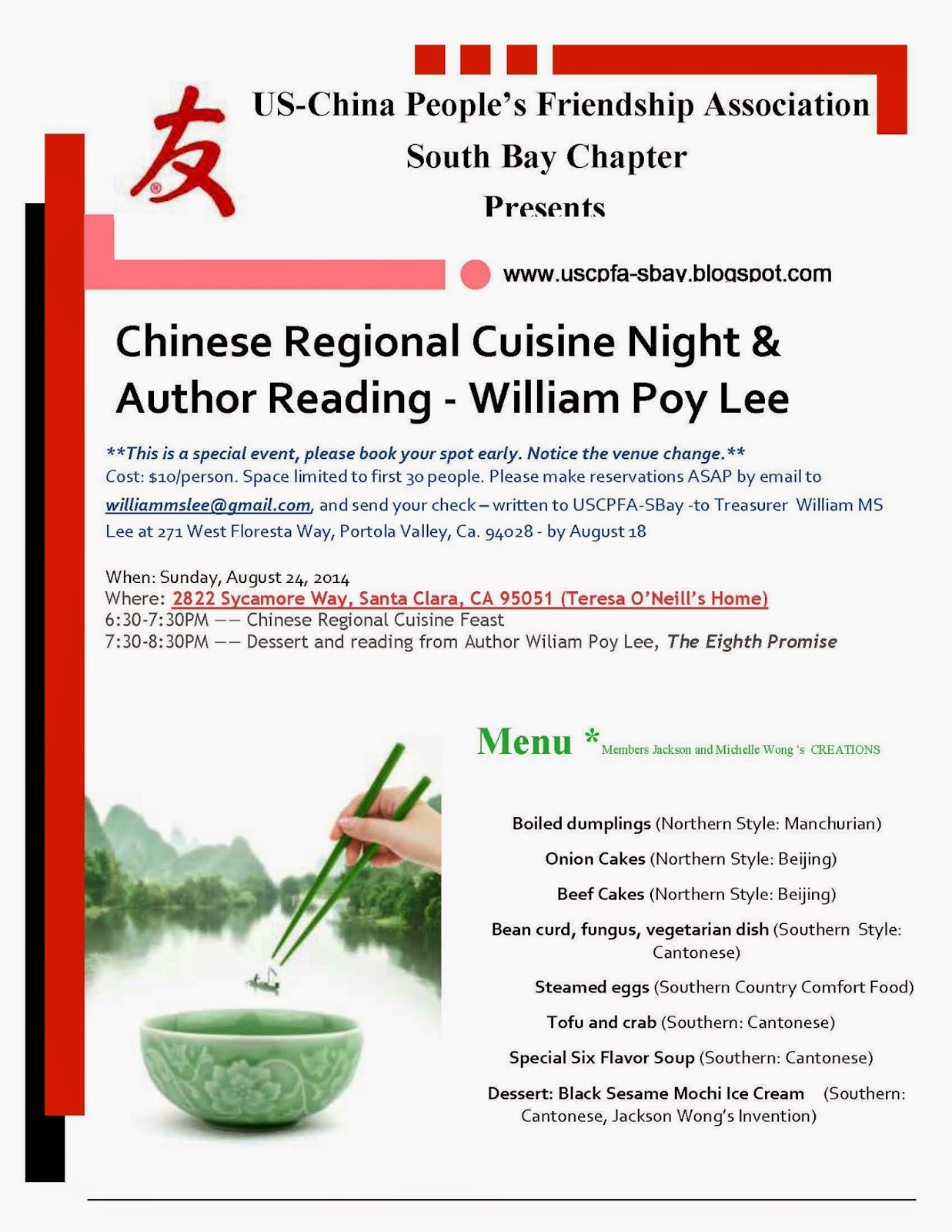According
to artist Shirley Lin Kinoshita, Chinese Ink Painting is not only the oldest
art form in the world, dating back 2-4,000 years, but is one of the highest art
forms in China. Despite this, she joked, no Asian parent wants his/her child to
be an artist. “Study to be a doctor. Or lawyer!”
Kinoshita
studied library science on full scholarship at UC Berkeley. For years she was a
full-time Medical Library Manager at Santa Clara Valley Health and Hospital. It
was only when she cut back on her hours as she neared retirement that she decided
to explore something different. A Chinese brush painting class was on offer, so
she gave that a try. She was immediately hooked, not only painting for profit
but also teaching others the form.
Ink
Painting consists of Four Treasures:
Ink
(pine soot mixed with glue molded into sticks),
Inkstone,
Brush
(made with animal hair and invented around 250B.C),
and
paper (invented by Chinese court official Ts’ai Lun around 105AD).
There
are also Six Canons of Chinese painting that every student learns, rules that
were created in 500AD by the painter Hsieh Ho.
1.
Chi’I
sheng-tung: Create spirit/life/vitality in art
2.
Ku-fa
Yung-Pi: Use the brush to create structure
3.
Ying-wu
hsiang-hsing: Draw its likeness
4.
Sui-lei
fu-ts’ai: Apply color in accordance with nature (i.e.no purple sunflowers)
5.
Ching-ying
wei-chi: Plan the design with each element in its proper place
6.
Ch’uan-I
mo-hseih: Study by copying the old masters
Of
these six rules, Kinoshita said, the first—qi/spirit-- is the most important. In
fact, “Asian brush painting is more spiritual than physical. It is believed
that the best painters are pure of spirit.” Underlying the philosophy of ink
painting is the unifying pattern of life in all its natural forms. She pointed
out, “Man is a humble, insignificant part in this scheme.”
Kinoshita
held up paintings she had done of bunnies representing life, and a rooster, hen
and chicks representing family, and three goldfish representing abundant wealth.
She explained that there were four plants most typically depicted, also known
as “the four gentlemen.”
She drew each one of the Four Gentlemen for us:
Bamboo
(representing strength and resilience.),
Chrysanthemum
(representing fidelity and friendship),
Plum
Blossoms (representing endurance)
and
the Orchid (representing humility.).
As
she said, “Chinese painting is much more than meets the eye. The composition
can easily be read, but unless its inner and symbolic meanings are recognized,
the whole painting will only be partially enjoyed.”
While
Kinoshita still paints, it is mostly for herself and to teach her
grandchildren. These days her days are filled as President of the Silicon
Valley United Nations Association. However, for those interested in pursuing their
artistic side, Kinoshita recommended two artists in the area. Ming Lee at the
Cupertino Senior Center and Judy Chu at the Sunnyvale Community Center.
(Photos courtesy of Billy Lee)










.JPG)











.jpg)













